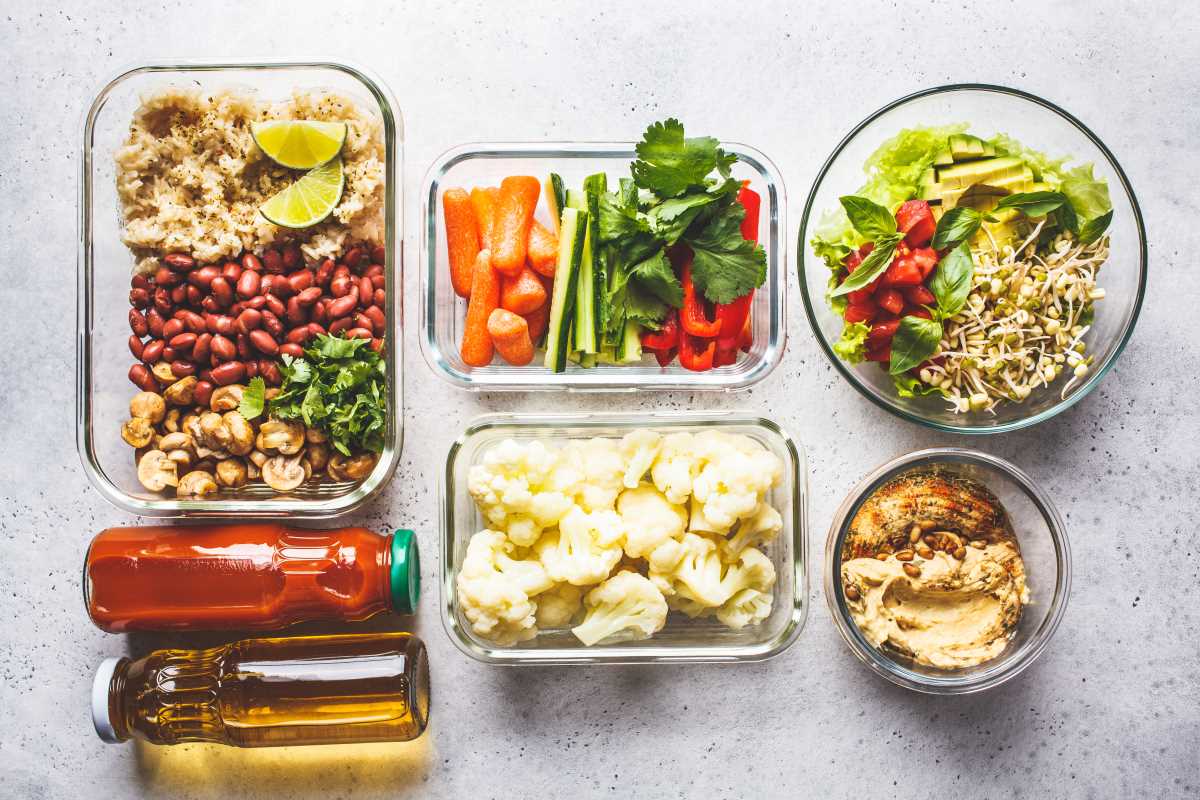Living with a chronic condition often means facing flare-ups—those unpredictable moments when symptoms worsen, taking a toll on your physical and emotional well-being. During these times, everyday tasks can feel daunting or downright impossible. While you may not always be able to stop a flare-up in its tracks, you can take steps to prepare for it. Enter the flare-up care kit. Think of this kit as a lifeline during challenging moments, uniquely tailored to meet your specific needs.
A well-organized and thoughtfully prepared flare-up care kit not only provides comfort and relief but also offers something equally valuable in tough times: a sense of control. This comprehensive guide will walk you through everything you need to create the perfect care kit for your unique situation.
What is a Flare-Up Care Kit?
A flare-up care kit is a personalized collection of items designed to address the symptoms and challenges you commonly face during a flare-up. The kit typically includes a mix of physical aids, emotional support tools, and essentials for hydration, nutrition, and recovery. The beauty of this kit lies in its flexibility; it lets you add, remove, or replace items based on your evolving needs.
The ultimate goal? To ensure you’re equipped to manage even the toughest moments with a little more ease and a lot more comfort.
Why Do You Need a Flare-Up Care Kit?
Living with a chronic illness can feel unpredictable. Even with strategies to reduce triggers, some flare-ups remain inevitable. A well-thought-out care kit reduces the stress of being unprepared when symptoms strike. Instead of scrambling for relief, you’ll have ready access to the tools and comforts that work best for you.
Benefits of having a flare-up care kit include:
- Faster symptom relief.
- Reduced mental stress during flare-up episodes.
- Enhanced emotional comfort through familiar and calming items.
- Improved self-awareness and preparedness for managing your condition.
With your kit packed and accessible, you’re no longer at the mercy of flare-ups. You now have a solid plan to fall back on.
Steps to Create Your Flare-Up Care Kit
Step 1. Identify Your Needs
Start by asking yourself this essential question: “What specifically do I need during a flare-up?” This will vary based on your chronic condition, the severity of your symptoms, and your unique triggers.
Here’s how you can pinpoint your needs:
- Track Symptoms: Keep a journal of your flare-up experiences. Note common symptoms, triggers, and the remedies that offer the most relief.
- Match Solutions to Symptoms: For each key symptom, think of items that could help:
- Joint pain? Opt for a heating pad or arthritis-friendly creams.
- Sensory sensitivity? Include noise-canceling headphones or an eye mask.
- Digestive discomfort? Stock peppermint tea or anti-nausea aids.
You might also find it helpful to consult with a healthcare professional to determine additional essential items.
Example Scenario:
Jane, who experiences chronic migraines, might list common symptoms like extreme light sensitivity, nausea, and fatigue. For her kit, she chooses items like dark sunglasses, cooling gel packs, ginger candies, and a lavender-scented eye pillow.
Taking the time to think through your needs will make the rest of the process much easier.
Step 2. Choose Items for Physical Support
When physical symptoms flare up, having the right tools on hand can make a world of difference. Think of this part of the kit as your comfort arsenal.
Suggested Items:
- Hot or Cold Therapy: These provide quick relief from joint pain, swelling, or muscle tension. Heat wraps, hot water bottles, and gel packs that double as ice packs are versatile additions.
- Pain-Relief Options: Pack over-the-counter medications like ibuprofen or acetaminophen. Don’t forget balms, patches, or sprays that target pain directly.
- Hydration Solutions: Dehydration can worsen symptoms. Include refillable water bottles, flavored electrolyte drinks, or herbal teas like chamomile for soothing hydration.
- Supportive Accessories: Use compression gloves, braces, or cushions to ease joint discomfort. Eyeglasses or light-filtering lenses may also help with eye strain or sensitivity.
Pro Tip: Keep single-use heat or ice packs handy for travel or emergencies when you don’t have access to electricity or water.
Step 3. Add Emotional Support Tools
Flare-ups don’t just challenge the body; they can weigh heavily on your emotional well-being. Addressing mental health is just as important as physical relief. Your care kit should include tools that bring you comfort and soothe your mind.
Recommendations:
- Stress Relievers: A stress ball, fidget cube, or even a small puzzle can act as calming distractions.
- Portable Entertainment: Download your favorite podcasts, audiobooks, or meditations onto a device so you always have an escape from overthinking.
- Grounding Objects: Bring the familiar into tough moments with a small item you connect with emotionally, like a family photo or a comforting keepsake.
- Journaling Supplies: Writing down your thoughts or simply tracking your pain levels can bring clarity and emotional release.
Pro Tip: Apps like “Calm” or “Headspace” can offer guided meditations for relaxation, which can be a lifesaver during tough episodes.
Step 4. Prioritize Rest and Recovery
Sleep and rest are pivotal during a flare-up. However, symptoms can make truly restful sleep hard to come by. Your kit should contain bedtime aids to help you drift off or simply relax.
Items to Include:
- Noise Blockers: Earplugs or noise-canceling headphones eliminate disruptive sounds.
- Comfort Layers: A weighted blanket can provide a grounding sense of security, while soft socks or a warm shawl keep you cozy.
- Aids for Sleep Promotion: This could mean an essential oil roller containing lavender, herbal tea like valerian root, or a playlist of calming nature sounds.
Example: Maria, who struggles with fibromyalgia, keeps her weighted blanket and sleep spray in her kit. She also includes an eye mask with soothing cooling features.
Remember that recovery takes time. Focus on creating a soothing atmosphere that nurtures your body and mind.
Step 5. Stock Simple Snacks and Drinks
Keeping your energy up while avoiding symptom-triggering foods might feel tricky during flare-ups. That’s why keeping healthy, easy-to-access snacks in your kit is essential.
Snack Ideas:
- Non-Perishables: Think low-effort options like applesauce, canned soups, or oatmeal cups.
- Portable Proteins: Jerky, protein bars, or nut butter packs deliver nourishment without preparation.
- Electrolyte Replacements: Staying hydrated can ease headaches or fatigue, so keep drink packets designed to replenish electrolytes.
Pro Tip: Stock a variety of items to account for changing appetites. Ensure everything fits your dietary needs and avoids common symptom triggers such as sugary or fried foods.
Step 6. Organize and Customize Your Kit
Your care kit should be user-friendly. Don’t just toss items into a box and call it a day. Instead, create sections or pouches for easy access. For portability, choose compact containers that fit your lifestyle—for example, a pouch for work or travel.
Personalize with Care: Add an uplifting playlist, calming scents, or a motivational note to yourself. These small personal touches can brighten even the hardest day.
Pro Tip: Label items clearly to avoid unnecessary frustration during flare-ups. Refill or replace supplies every month to keep your kit ready to go.
Step 7. Keep It Accessible and Up-to-Date
Where you store your kit matters. There’s no point in crafting a perfect flare-up care kit if it’s nowhere to be found when you need it most. Identify strategic locations like your bedroom, living room, or even your car. If possible, create multiple mini kits for easy access wherever you are.
Don’t forget to update your kit regularly. Replace expired medications, tweak supplies based on your changing needs, and swap out any emotional support items that feel less effective over time.
Pro Tip: If you have a larger kit at home, consider assembling smaller “satellite kits” with essential items to keep at your workplace or in your bag when going out.
Ideas for Specific Conditions
Every condition is unique, so customization is key. Here are some condition-specific ideas for inspiration:
- Fibromyalgia: Magnesium lotion, Epsom salts for baths, and comfortable slippers can help ease pain.
- Migraines: Cooling patches, blackout curtains, and ginger tea to tackle nausea.
- Arthritis: Consider gel wraps, adaptive tools like jar openers, or therapeutic gloves.
Creating kits tailored to individual needs ensures every item offers value when it’s needed.
Why a Flare-Up Care Kit is Empowering
A flare-up care kit represents preparedness, self-care, and resilience. Knowing you have the tools to manage tough days provides peace of mind and helps reduce the anxiety that flare-ups can bring. It empowers you to focus on recovery, not stress.
By proactively creating your kit today, you’re taking an important step toward making life a little easier—even on the hard days. Assemble your kit, make it uniquely yours, and give yourself the gift of preparedness.







